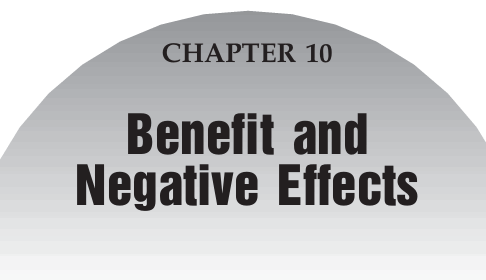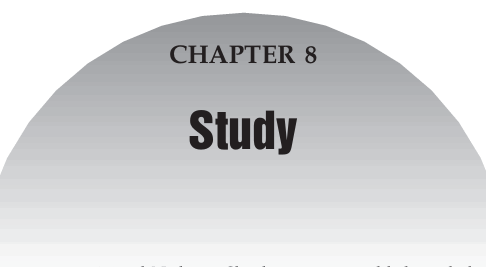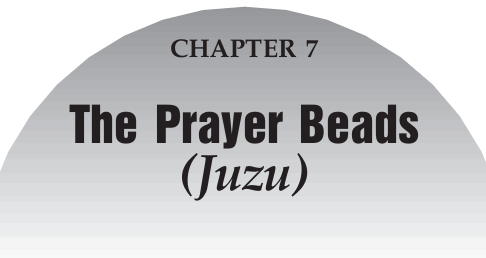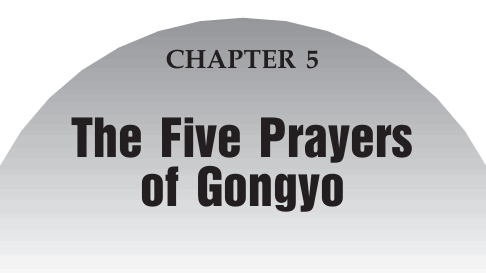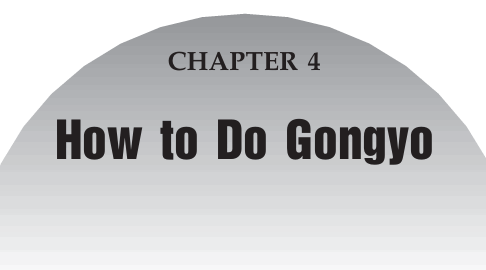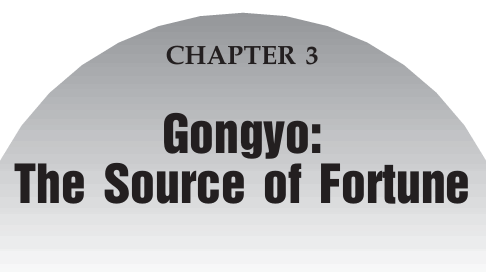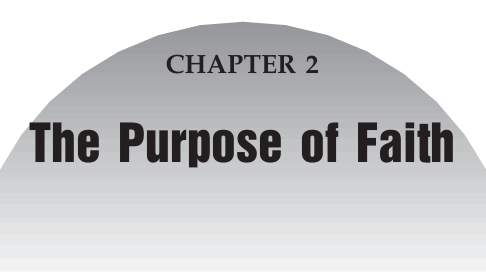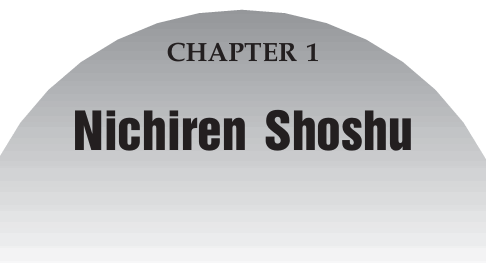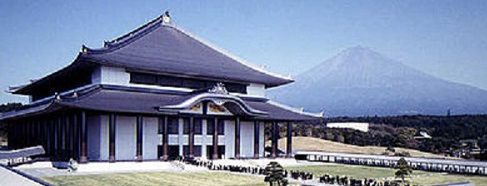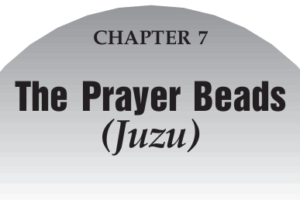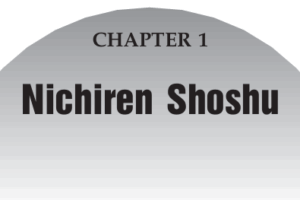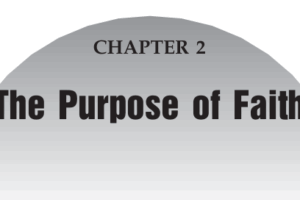WHAT IS BENEFIT?
When we practice to the Gohonzon with faith, the great life condition of Buddhahood will manifest in the depths of our lives. We can expiate our negative karma from the past and experience it as a lesser effect. We are, at once, able to lessen the heavy suffering, both material and spiritual, that would have manifested in our present life as a result of negative past causes.
What is more, for the practitioner of Nichiren Shoshu, the lesser negative effects can be changed into great benefit. This is called hendoku iyaku, the Buddhist term for “changing poison into medicine.” No matter how many problems and sufferings may arise, if we muster strong faith and never give up this practice, these situations will be resolved. Moreover, our life condition will open up to a life of greater happiness. This is the Gohonzon’s great benefit, changing misfortune into happiness. To state a few examples: poor health can change into good health, poverty can become financial stability, a selfish person can become a person of noble character, and family discord can be transformed into true family happiness.
Thus, by overcoming our sufferings and problems, we are filled with a strong life force and enjoy true fulfillment. The force that impels us to accomplish this is Buddhahood welling up within our hearts as a result of our faith in the Gohonzon. The greatest benefit is the attainment of Buddhahood in one’s present form.
Nichiren Daishonin stated:
Great achievement means happiness. To subdue evil is the great achievement. To accumulate goodness is called virtue. In Buddhism, great achievement and virtue (benefit) mean attaining Buddhahood in one’s present form.
(Gosho, p. 1775)
Suffer what there is to suffer, enjoy what there is to enjoy. Regard both suffering and joy as facts of life and continue chanting Nam-Myoho-Renge-Kyo, no matter what happens. Then you will experience boundless joy from the Law. Strengthen your faith more than ever.
(MW, Vol. 1, p. 161; Gosho, p. 991)
The attainment of Buddhahood in one’s present form does not mean that we will become detached from people in the world or be without troubles or sufferings. Rather, it is the ability to live a life filled with joy, challenging problems and resolving them.
The attainment of Buddhahood in one’s present form is the life condition symbolized by the four virtues of Jo, Raku, Ga, and Jo. Jo (eternity) is an indestructible eternal life. Raku (happiness) is a feeling of absolute (as opposed to “relative”) happiness from enjoyment of living itself. Ga (true self) is a strong and harmonious will, undisturbed by any outside influence. Jo (purity) is a pure life, unaffected by outside influences.
CONSPICUOUS AND INCONSPICUOUS BENEFIT
By having strong faith in Nichiren Shoshu Buddhism, all people can attain the life condition of absolute happiness, or Buddhahood. As proof, benefit is revealed by the effect of Buddhahood welling up inside the life of the believer. The emergence of the great power of benefit from the Gohonzon will provide absolute proof, leaving no room for doubt.
In Nichiren Daishonin’s words:
Nam-Myoho-Renge-Kyo is like the roar of a lion. What sickness can therefore be an obstacle? It is written that those who embrace the Daimoku of the Lotus Sutra will be protected by Kishimojin and her ten daughters. They will enjoy the happiness of Aizen and the good fortune of Bishamon. Wherever your daughter may frolic or play, no harm will come to her; she will be free from fear like the lion king.
(MW, Vol. 1, p. 119; Gosho, p. 685)
There are two kinds of benefit: conspicuous and inconspicuous. In the Latter Day of the Law, inconspicuous benefit is most important. Conspicuous benefit is an obvious realization of our prayers. But the greater benefit is inconspicuous benefit, which appears gradually over time.
The Daishonin states:
Those who obtained benefit during the Former and Middle Days of the Law received “conspicuous” benefit, because the relationship they formed with the Lotus Sutra during the lifetime of the Buddha had finally matured. On the other hand, those born today in the Latter Day of the Law receive the seed of Buddhahood for the first time, and their benefit is therefore inconspicuous.
(MW, Vol. 4, p.113; Gosho, p. 1104)
The one thousand year period following Shakyamuni’s death is called the Former Day of the Law (Shobo), and the subsequent one thousand year period is called the Middle Day of the Law (Zobo). Those born during these two periods were able to attain enlightenment through the Buddhism of Shakyamuni. These people had, in the past, laid the foundation to become Buddhas, and had in past lives accumulated great good deeds through their Buddhist practice. This is why the benefit they received was mainly conspicuous benefit, revealed immediately and clearly.
On the contrary, those born in the period of the Latter Day of the Law (Mappo) have not accumulated any good deeds from Buddhist practice in the past because they have no connection with Shakyamuni’s Buddhism. Only after meeting Nichiren Daishonin’s Buddhism have we begun to build the foundation to become Buddhas. Therefore, the benefit we receive is inconspicuous, like the seed that has just been sown, which grows into a seedling, and gradually develops to become a mature tree. It is impossible for the seed sown yesterday morning to grow into a mature tree by today. For the seed to germinate, sink its roots, and then grow into a great tree, it will take care and a number of years. In the beginning, it is hard to discern any growth, but as time passes, one can see that great growth has been achieved. Inconspicuous benefit is comparable to this process.
As one accepts and embraces the Gohonzon, and strives in faith, various conspicuous benefits will often be experienced in accordance with the time and the situation, such as the benefit for the beginner in faith, the protection of the Shoten Zenjin when one is facing a problem that needs to be solved, or when one’s life or livelihood is on the edge. These conspicuous benefits are but a small part of the benefit from the Gohonzon in comparison to inconspicuous benefits.
Some who take faith for only one or two months, not understanding this point, might complain saying that they still haven’t received any benefit. They misunderstand the essence of great inconspicuous benefit. If we continue to practice for three years, five years, and so on without impatience, we will all be able to look back on our lives and, without exception, realize that our whole life has elevated, and that we have accomplished immense development. Whether we realize it or not, the actual proof of inconspicuous benefit will become undeniably evident.
There are also believers who start practicing consistently, yet obstacles still arise in their lives. This is due to negative karma from past lifetimes coming to the surface. As we continue a persistent practice to the Gohonzon we will certainly be able to change our negative karma and enjoy happy lives. Eradicating the karma of unhappiness and establishing a happy, elevated life condition is a manifestation of inconspicuous benefit.
Nichiren Daishonin stated:
Because of actual proof, which we accumulate from our daily practice, we must take strong faith in this profound Buddhism.
(Gosho, p. 814)
By experiencing the benefit of the Gohonzon, one can be firmly convinced of achieving the life condition of “attaining Buddhahood in one’s present form,” which is the greatest of all inconspicuous benefits, and is the purpose of our faith.
WHAT IS “BACHI”?
Bachi is a Buddhist term. Simply stated, it is the phenomenon in our lives whereby we have a loss instead of a gain, or when we have negative effects instead of positive experiences.
In general, when we think about negative effect, we tend to view this as something enforced on us by an outside power, such as a punishment meted out by Buddha or by God. Negative effects in Buddhism are not like this. They are based on the strict law of cause and effect.
For example, traffic regulations are one set of rules we live by in our present society. Whether we know about traffic regulations or not, when we ignore the traffic lights, some form of negative effect results, such as a car accident or a traffic ticket. Even though we do not know the rules, the penalty is still the same. When we suffer a loss, no other person has caused it to happen, nor given us punishment. It is a direct result of our own actions.
Bachi (negative effect) in Buddhism works in essentially the same manner. It is not something that is imposed. It is born out of one’s own actions. The person engaging in negative behavior will experience the effect.
This Buddhism of the Three Great Secret Laws was established by Nichiren Daishonin, the True Buddha of Kuon Ganjo (the infinite past), with His compassion and great mercy, for the sake of all humanity. The Three Great Secret Laws were established in the form of the Dai-Gohonzon. By taking faith we are able to make the highest possible cause to acquire absolute happiness, the life condition of Buddhahood. Therefore, the root cause of unhappiness is going against the teachings of True Buddhism.
Nichiren Daishonin has shown us the principle that:
To begin with, the Lotus Sutra was taught to lead all people to enlightenment. However, only those who have faith in it attain enlightenment. Those who slander it fall into the hell of incessant suffering.
(MW, Vol. 1, p.157; Gosho, p.905)
FOUR KINDS OF BACHI
Negative effects are classified into four types. They are conspicuous, inconspicuous, individual, and general. The difference between conspicuous and inconspicuous negative effects (bachi) is seen in how they manifest. Conspicuous effects are clearly revealed. Inconspicuous negative effects do not appear immediately, but accumulate over time as the person falls into more severe unhappiness. The individual and the general are different in scope. Individual negative effects are experienced by the individual, and general negative effects are experienced at large, as by a group or a particular country. Inconspicuous is more serious than conspicuous. Likewise, general negative effects are greater in scope than individual effects.
For example, Ota Chikamasa, Nagasaki Tokitsuna, and Daishinbo, who persecuted believers during the Atsuhara Persecution, suffered the conspicuous negative effect of an untimely death when they fell from their horses. Hojo Nagatoki and his father, Hojo Shigetoki, sentenced Nichiren Daishonin to the Izu Exile. They experienced inconspicuous, individual, negative effects. Nagatokoi died from an illness and Shigetoki went insane. Hei no Saemon had the Three Martyrs, led by Jinshiro, beheaded during the Atsuhara Persecution. His whole family was exiled, and he and his son were executed fourteen years after the persecution. These are examples of inconspicuous negative effects because they appeared a long time after the causes were made. They can involve more severe results than conspicuous negative effects might.
These examples are called “individual” because each person received the effect in a different manner. But in a country filled with people who go against the Three Great Secret Laws, general negative effects such as inflation or war will occur, and, as a result, the whole population will fall into great suffering. The Daishonin stated: Just as an arrow never misses the target of the earth, all people in Japan who slander this True Law will definitely fall into the hell of incessant suffering.
(Gosho, p. 750)


